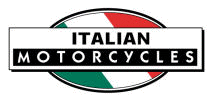


Triumph, BMW, & Kawasaki Sales Spares & Repairs.
Established for over 40 years and run by expert motorcyclists.
Fully authorised workshop.
A Brief History of the Italian Marque
The firm Ancora di Tacchini e Pracchi & C. was located in Milano at Via Plinio 2 and built motorcycles after the end of the Great War.
Their first motorcycle was presented to the Salone del Ciclo e Motociclo in Milan in 1923, a cycle frame suitably modified and equipped with a Parvus engine, also built in Milan.
Given the favorable reception, a few months later they built a motorcycle with a 147 cc Villiers engine and two-speed Albion gearbox.
Quality of the product continued to improve, and the following year at the Milan Show they displayed a machine with a larger 247cc Villiers driving through a Sturmey Archer two speed gearbox.
Production began to rely more on Villiers engines of 122 to 247cc.
In competition they had success in 1926 when Enrico Manetti won the 175 class of the Circuito del Lario.
They also raced with the champion rider Nello Pagani aboard, and in the 1931 season he won a swag of races for the Milan factory, winning the Circuit of Asti, Tour of the Alps, Varesine circuit Gornate, uphill race in Monte Bisbino Cernobbio - and winning the silver medal at the International Six Days Trial.
Another rider who brought laurels to the factory was Raffaele Alberti.
In 1933, the company was purchased by Umberto Dei, a famous figure in the Italian motorcycle industry active since 1903.
The Ancora name was retained until 1936 (or possibly 1939) after which the machines were sold under the Dei brand name.
In the early nineteen-fifties the marque reappeared, marketed by Ciclomeccanica Codonis located at Via Macerata 6.
These mopeds were powered by a JLO 49cc two-stroke, single-cylinder engine with bore and stroke of 38x43mm. Power output is 1.5 hp. Multiple disc clutch in
steel, chain final drive. Tube frame, tank capacity 5.5 liters, parallelogram style front forks, drum brakes,
tyres 26 x 1 1/2 x 1 5/8, weight 34 kg, magneto flywheel 16.5 W and 5 VAC.
Notes: 1. Possibly into the 1950s, see Ancoretta
Sources: Moto di Lombardia, Tragatsch p74, racingmemo.free.fr
If you have a query or information about Ancora motorcycles please contact us